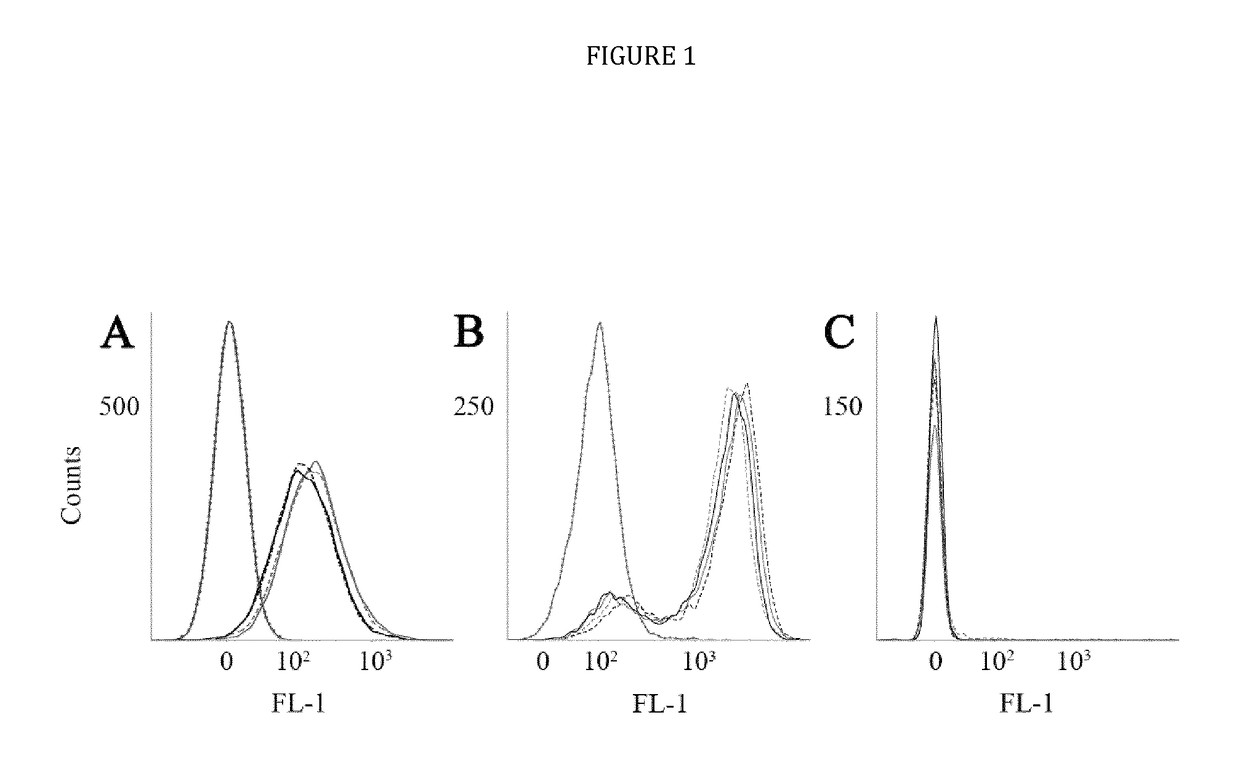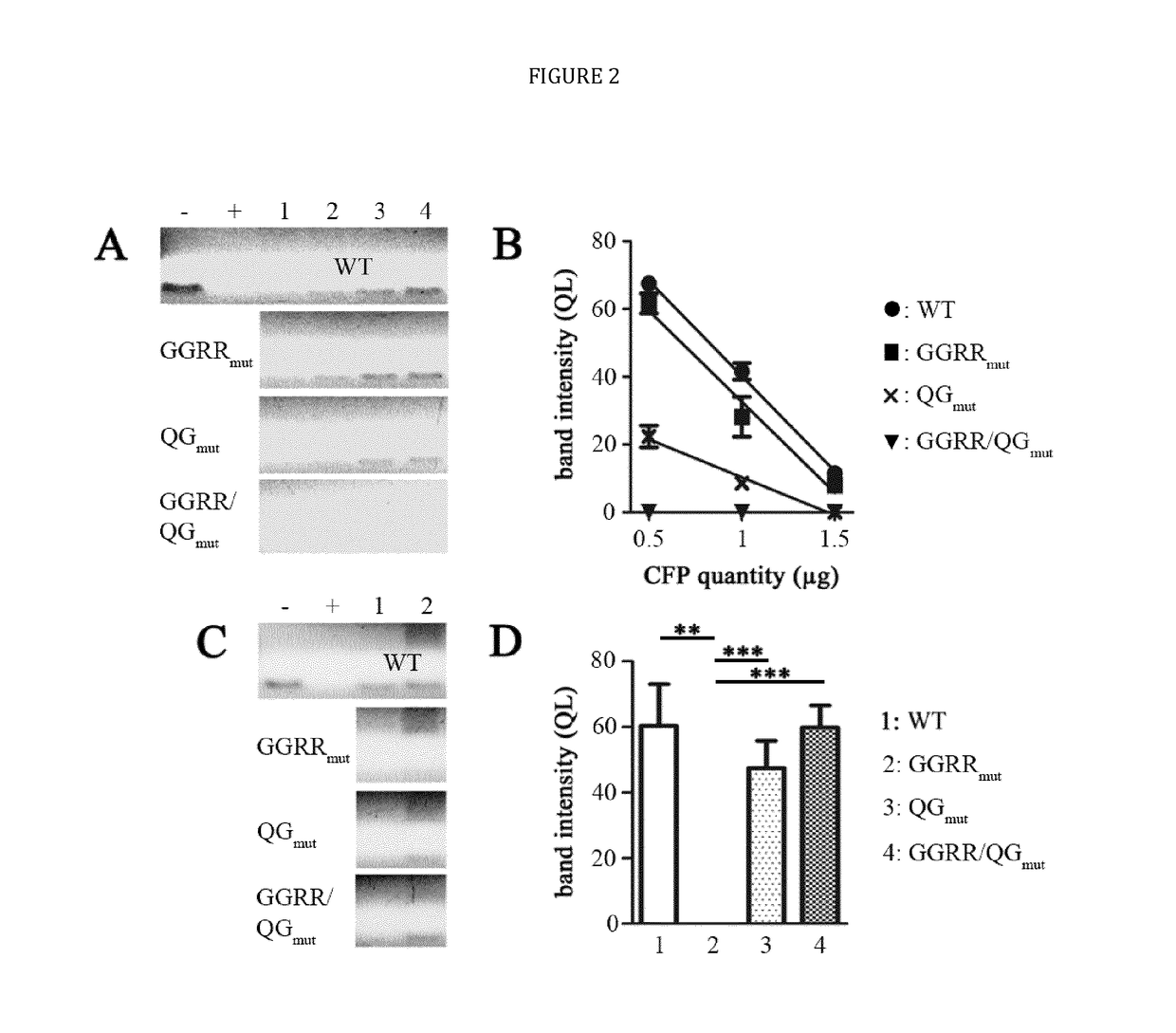Human cytolytic fusion proteins
a cytolytic and human technology, applied in the direction of peptides, peptide/protein ingredients, angiogenin, etc., can solve the problems of limiting the impact of long-term treatment, reducing the risk of inducing a treatment-associated immune response, and affecting the inhibition of protein biosynthesis by
- Summary
- Abstract
- Description
- Claims
- Application Information
AI Technical Summary
Benefits of technology
Problems solved by technology
Method used
Image
Examples
Embodiment Construction
[0024]The present disclosure provides novel recombinant human cytolytic fusion proteins (hCFPs) suitable to induce apoptosis in human CD64 expressing cells comprising a target cell-specific binding component and a human effector domain, wherein the binding component comprises an antibody or an antibody fragment with an antigen-binding site for binding to the cellular surface receptor CD64, and the effector domain comprises a variant or a functional fragment of wild type human angiogenin (Ang) as shown in SEQ ID NO: 1.
[0025]Advantageous embodiments of the present disclosure pertains to recombinant human cytolytic fusion proteins (hCFPs) suitable to induce apoptosis in human cells comprising a target cell-specific binding component and a human effector domain, wherein the binding component comprises an antibody or an antibody fragment with an antigen-binding site for binding to the cellular surface receptor CD64, and the effector domain comprises a variant or a functional fragment of ...
PUM
| Property | Measurement | Unit |
|---|---|---|
| temperature | aaaaa | aaaaa |
| temperature | aaaaa | aaaaa |
| pH | aaaaa | aaaaa |
Abstract
Description
Claims
Application Information
 Login to View More
Login to View More - R&D
- Intellectual Property
- Life Sciences
- Materials
- Tech Scout
- Unparalleled Data Quality
- Higher Quality Content
- 60% Fewer Hallucinations
Browse by: Latest US Patents, China's latest patents, Technical Efficacy Thesaurus, Application Domain, Technology Topic, Popular Technical Reports.
© 2025 PatSnap. All rights reserved.Legal|Privacy policy|Modern Slavery Act Transparency Statement|Sitemap|About US| Contact US: help@patsnap.com



